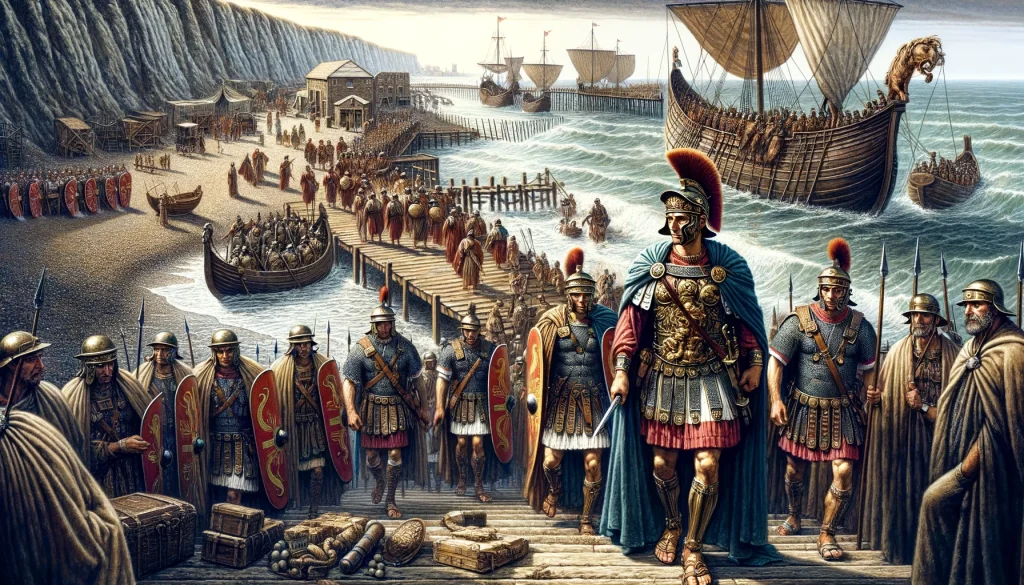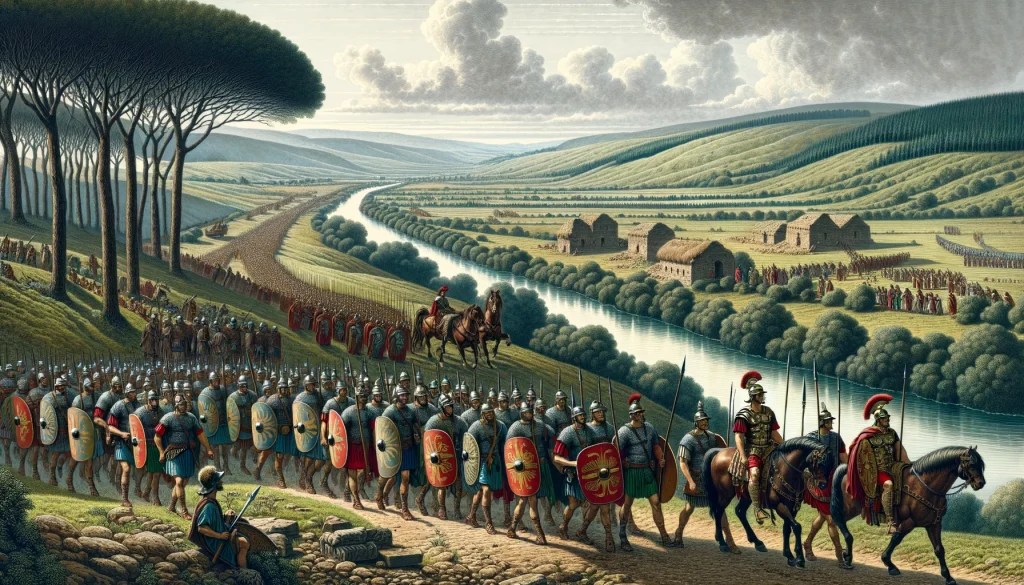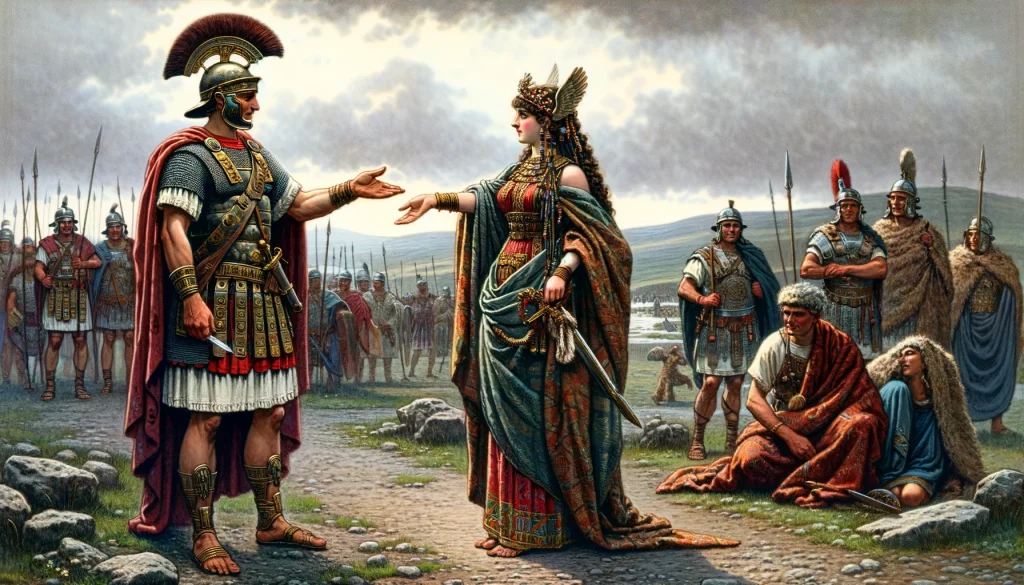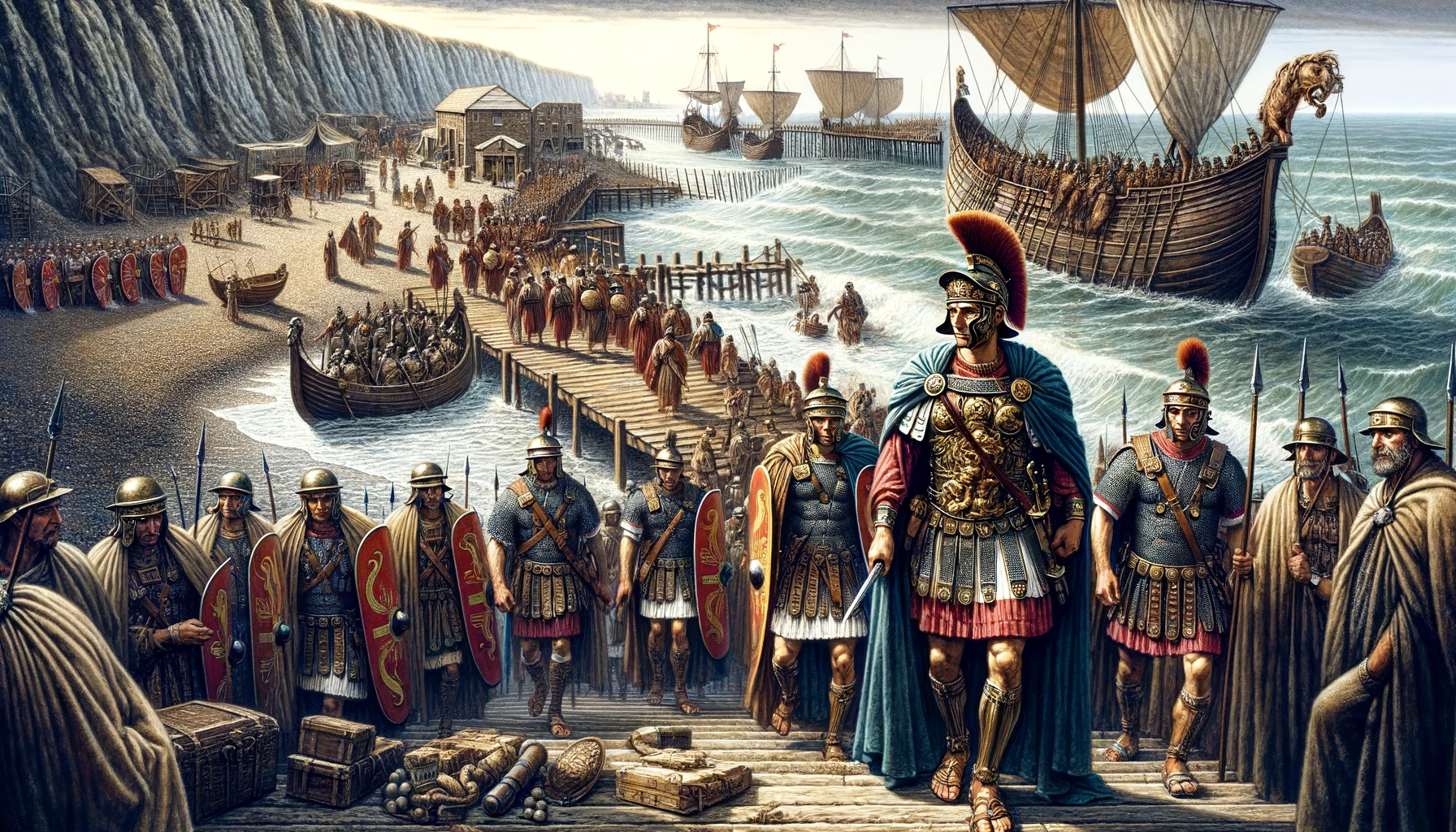The only classical account of Aulus Plautius‘ invasion of Britain is Cassius Dio’s History of Rome (book LX, chapter xix), with anecdotal references in Suetonius’ The Life of Claudius . The best modern book on the subject by far is Graham Webster’s The Roman Invasion of Britain.

The original bridgehead fortifications at Richborough (Rutupiae) are well known and enclose an area of about 140 acres (c.57 ha). A military precursor to the civitas of the Cantiaci tribe atCanterbury (Durovernum) has been postulated but the only evidence which has come to light thus far are the foundations of a number of timber buildings built in Roman military style also a re-cut V-shaped defensive ditch at another location within the bounds of the later walled town. Another fortification is suspected at Rochester (Durobrivae) at the crossing of the Medway, where the Roman invasion force met its first real opposition and a major battle was fought which lasted two days and claimed the life of the British warlord Togodumnus, the brother of Caratacus. The ditch of a large (c.75 acres, 30.5ha) Claudian camp has been confirmed at London (Londinium) near the crossing of the Thames in Fenchurch Street, and it is thought that another camp, similar in size, was positioned further to the west near Hyde Park.

Following the advance through Cantium and the surrender of the British tribes near Chelmsford (Caesaromagus), a legionary fortress was built by the Legio XX Valeria Victrix within the Oppidum of the Trinovantes tribe at Camulodunum (Colchester), which was supplied along the River Colne via a harbour on the estuary at Fingringhoe Wick. With his rear guarded, Plautius then sent his remaining three legions to the task of pacification.
- The Legio II Augusta under the able command of the young Titus Flavius Vespasianus, who was later to become emperor, marched south-westwards through Surrey, Hampshire and Dorset, capturing the Isle of Wight (Vectis Insvla) and establishing vexillation fortresses at Chichester (Noviomagus Reginorum) in West Sussex and Lake Farm near Corfe Mullen in Dorset. The legion was evidently supplied by the Classis Britannica – The British Fleet, who established supply bases for these fortresses at Bosham Harbour (Magnus Portus) in West Sussex and at Hamworthy in Dorset.
- The Legio XIV Gemina campaigned in the west, through the counties of Buckinghamshire, Oxfordshire, Warwickshire and Gloucestershire, establishing a campaign/vexillation fortress at Alchester (Bicester) in Oxfordshire and an auxiliary fort at Cirencester (Corinium Dobunnorum) in the centre of the Dobunni tribal territories.
- The Legio IX Hispana moved northwards, campaigning in Cambridgeshire, Northamptonshire and Leicestershire, through the lands of the Coritani, establishing vexillation fortresses at Longthorpe near Peterborough in Cambridgeshire and at Leicester (Ratae Coritanorvm) in Leicestershire.
Many British tribes were brought under the yoke of Rome during the four years of this general’s tenure in Britain. Many of the Romanised civitas centres of these tribes began life outside the defences of Roman garrison forts built by the legionary troops and occupied by the auxilia, often being sited at the centre of the tribe’s territories or within oppida earthworks.
- Canterbury (Durovernum) Cantiaci
- Saint Albans (Verulamium) Catuvellauni
- Chelmsford (Caesaromagus) Trinovantes
- CCorinium Dobunnorum (Cirencester) Dobunni
- Leicester (Ratae Coritanorvm) Coritani
- Chichester (Noviomagus Reginorum) Regnenses
A notable omission from the above list is Silchester (Calleva Attrebatum) the civitas of the Atrebates tribe, who apparently continued to occupy their ancient woodland capital with no trace of a nearby Roman garrison fort.

Plautius was also active in the diplomatic arena during his governorship, installingAdminius as ‘client’ king of the Cantiaci in Cantium/Kent and recognising Tiberius Claudius Cogidumnus as ‘pro-praetorian legate’ with authority over the Regnenses tribe of Suffolk and West Sussex. He also brokered treaties with two other major tribes, recognising Cartimanduas of the Brigantes in Northern England and Prasutagus of the Iceni in Norfolk as ‘clients’ of Rome.
Military Installations Attributed to Aulus Plautius
References for Roman Military Campaigns – Aulus Plautius ( AD43-46)
- The Roman Invasion of Britain by Graham Webster (Batsford, London, 1980);
- Britons and the Roman Army by Grace Simpson (Gregg, London, 1964);
- Historical Map and Guide: Roman Britain by the OS (3rd Edition, 1956; 4th Ed., 1990; 5th Ed., 2001);
